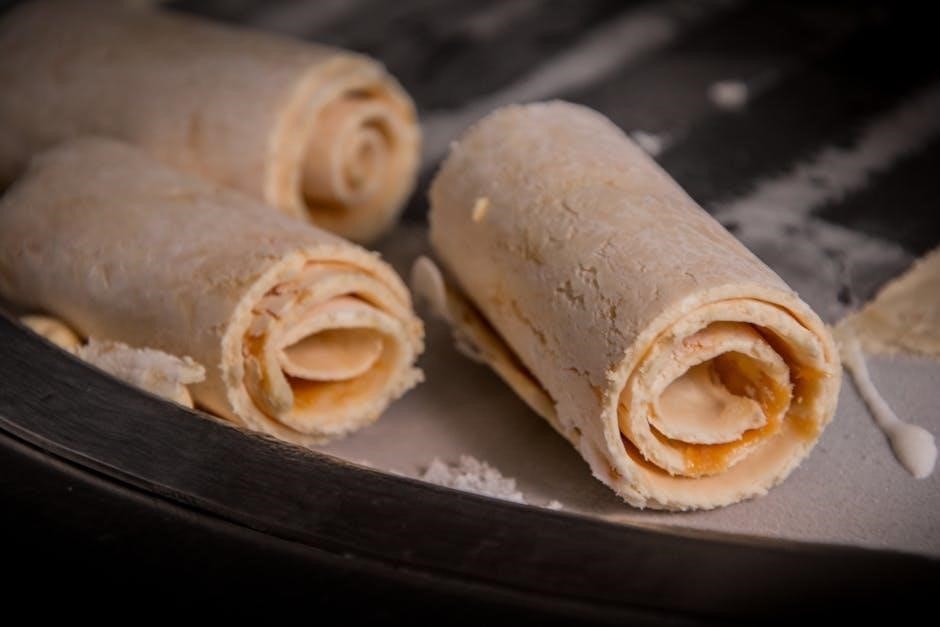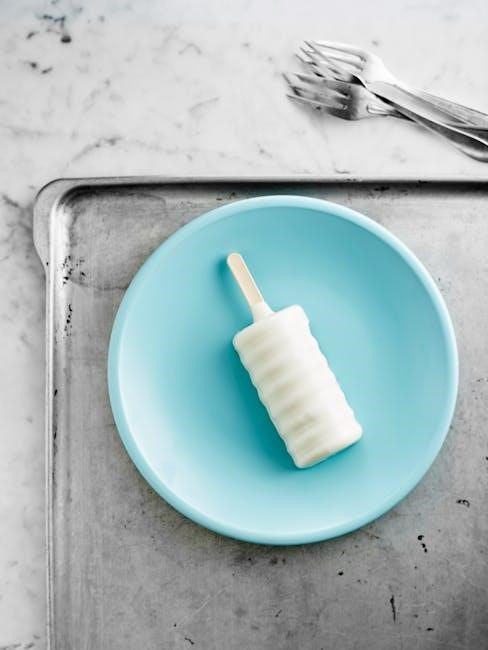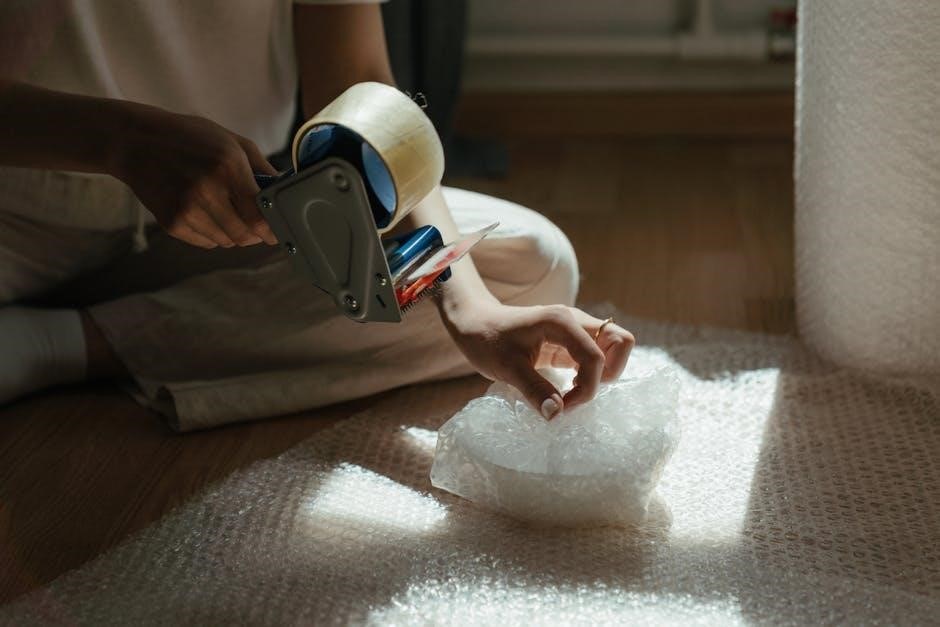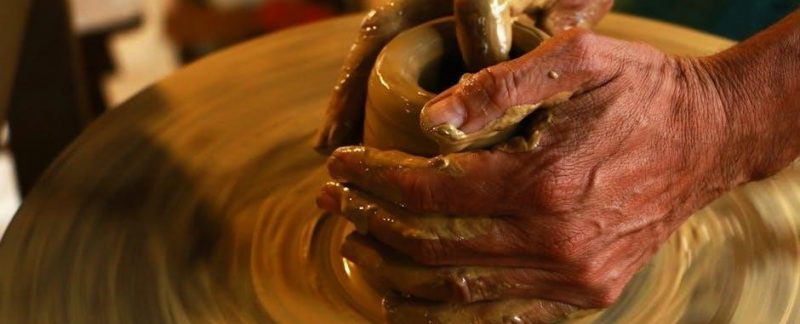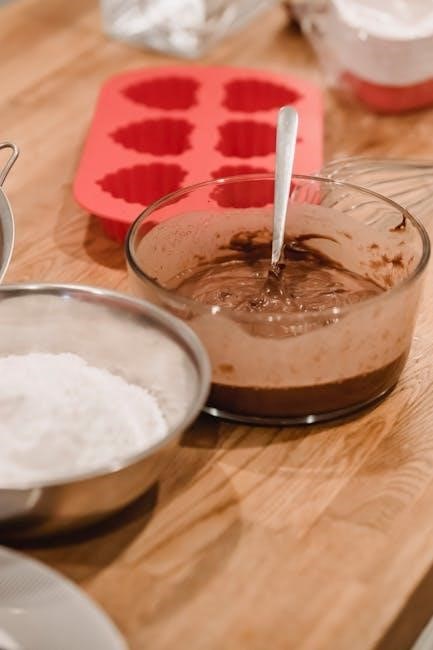DonJoy knee braces are essential for knee support and stability. This guide provides step-by-step instructions for proper strap use, ensuring comfort, stability, and optimal performance. Learn how to prepare, apply, and adjust your DonJoy knee brace effectively for maximum support and flexibility during daily activities or sports.
Overview of DonJoy Knee Braces
DonJoy knee braces are designed to provide superior support and stability for individuals with knee injuries or chronic conditions. Available in various models, including the FULLFORCE and ACL options, these braces feature adjustable straps, durable materials, and innovative designs to cater to different needs. Whether for post-operative recovery, sports, or daily activities, DonJoy knee braces are customizable to ensure a secure and comfortable fit. Their strap systems, such as the 4 points of leverage, help maintain proper alignment and reduce migration during use. These braces are trusted by athletes and medical professionals alike for their reliability and effectiveness in promoting knee health and mobility.
Importance of Proper Strap Use
Proper strap use is crucial for ensuring the DonJoy knee brace functions effectively. Secure straps prevent migration, providing consistent support and stability. Improperly fitted straps can lead to discomfort, restricted movement, or reduced brace performance. Adjusting straps correctly ensures optimal alignment, minimizing the risk of injury or strain. DonJoy knee braces feature multiple straps, such as thigh, calf, and anterior calf straps, designed to work together for maximum support. Ensuring straps are snug but not overly tight is key to maintaining comfort and flexibility. Proper strap use also extends the lifespan of the brace, preventing wear and tear from misalignment or over-tightening.
Objective of the Guide
This guide is designed to assist users in properly using and adjusting DonJoy knee brace straps. It provides comprehensive instructions on fitting, securing straps for maximum stability, and maintaining the brace. The guide also addresses common issues like strap migration and discomfort, offering practical solutions. By following the steps outlined, users can apply and adjust their brace with confidence, ensuring optimal performance and comfort tailored to their specific needs. Proper use enhances the brace’s effectiveness in providing support and preventing further injury.

Understanding the Components of the DonJoy Knee Brace
The DonJoy knee brace features thigh straps, calf straps, a knee cap for support, and additional straps for enhanced stability, ensuring proper alignment and secure fit.
Thigh Strap Features
The thigh strap is a critical component of the DonJoy knee brace, designed to provide superior stability and support. It is typically the uppermost strap, located above the knee joint, and plays a key role in preventing excessive movement. The strap is usually made from durable, breathable materials to ensure comfort during extended use. Some models feature additional padding for enhanced comfort, while others may include anti-migration technology to keep the strap in place during activity. Proper adjustment of the thigh strap is essential to achieve the desired level of support and stability, making it a vital part of the brace’s overall functionality.
Calf Strap Functions
The calf strap is a vital part of the DonJoy knee brace, offering essential support and stability below the knee. Its primary function is to secure the brace firmly in place, ensuring proper alignment and preventing excessive movement. Designed for comfort and durability, the calf strap is typically made from breathable, moisture-wicking materials to keep the skin dry during activity. It also helps distribute pressure evenly, reducing the risk of discomfort or irritation. Properly fitted calf straps ensure the brace remains stable, providing consistent support and enabling optimal performance during physical activities, making them indispensable for effective knee stabilization and protection.
Knee Cap and Support Design
The knee cap and support design in DonJoy knee braces are engineered to provide superior stability and protection for the knee joint. The knee cap is typically constructed from durable materials like aluminum or plastic, offering rigid support while allowing for natural movement. It is strategically positioned to align with the patella, ensuring proper tracking and minimizing stress on the knee. The surrounding padding is designed for comfort, absorbing shock and distributing pressure evenly. This design helps prevent hyperextension and lateral movement, making it ideal for individuals with ligament injuries or instability. The knee cap’s contoured shape enhances fit and promotes confidence during physical activity.
Additional Straps for Stability
Additional straps in DonJoy knee braces are designed to enhance stability and provide extra support during physical activity. These straps are typically made of durable materials like nylon or elastic and can be adjusted to customize the fit. They help prevent excessive movement, such as hyperextension or lateral shifting, by reinforcing the brace’s structure. Some models feature cross straps that crisscross the knee, offering added rigidity and control. These straps are particularly useful for individuals with severe instability or those engaging in high-impact sports. Properly securing them ensures optimal performance and confidence while minimizing the risk of further injury or discomfort.
Step-by-Step Guide to Applying the DonJoy Knee Brace
This section provides a detailed, systematic approach to correctly applying the brace, ensuring a proper fit, and securing all straps and hinges for optimal support.
Preparing the Brace for Use
Begin by unpacking the DonJoy knee brace and ensuring all components are included and undamaged. Inspect the straps, hinges, and padding for any signs of wear or debris.
If necessary, clean the brace with a mild soap solution to remove dirt or odors, then rinse thoroughly and allow it to air dry.
Next, align the straps and hinges to their default positions, ensuring proper mobility and flexibility.
Finally, position the brace near your leg, ready for application, making sure there are no obstructions or twists in the straps.
This preparation ensures a smooth and effective application process, adhering to the manufacturer’s guidelines for optimal performance and comfort.

Putting on the Brace
To put on the DonJoy knee brace, start by holding it with the thigh and calf sections separated.
Slide your leg into the brace, ensuring the patella (knee cap) is centered in the knee cap window.
Gently pull the brace up, aligning the hinge with your knee crease for proper support.
Next, fasten the lower straps first, working your way up to ensure even pressure and stability.
Pull each strap firmly to secure the brace, but avoid overtightening to prevent discomfort.
Finally, check that the knee cap is properly positioned and the brace fits snugly around your thigh and calf.

Securing the First Strap
Pull the strap firmly across the brace, ensuring it aligns with the designated buckle or fastening mechanism.
Insert the strap into the buckle, making sure it clicks securely into place;
Gently tug on the strap to confirm it is fastened properly and will not come loose during movement.
Repeat this process for additional straps, working from the bottom up to maintain stability.
Avoid overtightening, as this may restrict blood flow or cause discomfort.
Ensure the strap lies flat against your leg to prevent chafing or irritation.
Once secured, proceed to tighten subsequent straps for optimal support and alignment.

Positioning for Proper Alignment
After securing the first strap, ensure the brace is properly aligned with your knee joint.
The hinge of the brace should match the natural hinge of your knee for optimal support.
Adjust the brace so the patella (knee cap) is centered within the knee cap window.
Check that the thigh and calf straps are evenly spaced and not twisted.
Gently press the brace against your leg to ensure it sits firmly without shifting.
Bend your knee slightly to verify the brace moves naturally with your joint.
Make sure the straps are aligned with the contours of your leg for even pressure distribution.
If necessary, adjust the brace’s position by sliding it up or down before tightening further.
Tightening Straps Starting from the Farthest
This ensures even pressure distribution and prevents the brace from shifting.
Hold the brace firmly in place with one hand and tighten the farthest strap with the other.
Tighten each subsequent strap progressively, moving toward the knee.
Avoid over-tightening, as this may restrict blood flow or limit movement.
After tightening, bend your knee slightly to ensure proper alignment and comfort.
If any strap feels too loose or tight, adjust it before finalizing the fit.
This method guarantees optimal support and stability for your knee during activity.
Adjusting for Comfort and Range of Motion
After securing the straps, ensure the brace allows for a full range of motion.
Bend your knee slightly to test flexibility and adjust straps if movement feels restricted.
Loosen or tighten straps as needed to achieve a balance between support and comfort.
Avoid excessive tightness, which may cause discomfort or limit mobility.
Check for pressure points and redistribute tension if necessary.
Ensure proper blood flow by avoiding overly snug adjustments.
Once satisfied, perform a few knee bends to confirm the brace stays in place.
This step ensures optimal performance and wearer satisfaction during use.
Final Checks and Adjustments
After securing all straps, perform a final evaluation of the brace’s fit and performance.
Ensure all straps are snug but not overly tight, maintaining proper alignment and support.
Check for any pressure points or discomfort, making adjustments as necessary.
Test the brace by bending and straightening your knee to confirm flexibility and stability.
Walk around to ensure the brace remains secure and doesn’t shift during movement;
If needed, make minor tweaks to strap tension for optimal comfort and support.
These final checks ensure the brace functions correctly and provides the desired level of stability and comfort.

Adjusting the Straps for a Custom Fit
Loosen all straps slightly, then reposition the brace for proper alignment.
Tighten straps incrementally, ensuring even pressure and support.
Adjust for a snug fit that allows natural knee movement.
Ensure optimal comfort and stability by fine-tuning strap tension.
This process ensures a personalized fit tailored to your needs.
Strap Tightness and Security
Proper strap tightness is essential for stability and comfort. Overtightening can cause discomfort or restrict blood flow, while loose straps may reduce support. Start by fastening straps snugly, ensuring the brace stays in place without excessive pressure. For optimal security, tighten straps sequentially, beginning with the lower calf strap and moving upward. This ensures even distribution of pressure and prevents migration during movement. Always check strap tension after initial application and adjust as needed. A well-secured brace provides confidence and stability, allowing for normal knee function while protecting the joint. Consistent tension across all straps ensures reliable performance and comfort.
Ensuring Comfort and Flexibility

Comfort and flexibility are crucial for optimal knee brace performance; DonJoy knee braces are designed with breathable materials to prevent irritation and promote airflow. Adjust straps to avoid tight spots that may cause discomfort. Proper alignment ensures the brace moves naturally with your knee, maintaining flexibility; After tightening, perform a range-of-motion test to confirm ease of movement. If the brace feels restrictive, loosen straps slightly without compromising support. Regular wear helps the brace conform to your leg shape, enhancing comfort over time. A well-adjusted brace supports your knee while allowing natural movement, ensuring both comfort and effectiveness during activities.
Optimizing Range of Motion
Proper strap adjustment is key to maintaining natural knee movement. Ensure the brace is snug but not overly tight, as this can restrict flexion and extension. After securing the straps, bend and straighten your knee to test mobility. If movement feels limited, slightly loosen the straps, starting from the top and working downward. DonJoy braces are designed to support without hindering motion, so periodic checks are essential. For active individuals, small adjustments during use can enhance flexibility and performance. Always verify that the brace allows a full range of motion while providing stability, ensuring both comfort and functionality during physical activities.
Re-Tightening After Activity
After engaging in physical activity, it’s essential to re-tighten the straps of your DonJoy knee brace to ensure ongoing support and stability. Start by checking each strap to see if they’ve loosened due to movement or perspiration. Gently pull each strap to restore the desired snugness, making sure not to over-tighten, as this could restrict circulation or cause discomfort. Pay particular attention to the thigh and calf straps, as they are crucial for maintaining proper alignment and preventing Migration. Re-tightening after activity helps maintain optimal brace performance and protects your knee from potential strain or injury during continued use.

Maintenance and Care of the DonJoy Knee Brace
Regular cleaning and proper storage are crucial to extend the life of your DonJoy knee brace. Follow the manufacturer’s guidelines for cleaning and drying to maintain its integrity and performance.
Cleaning the Brace and Straps
Regular cleaning is essential to maintain the DonJoy knee brace’s performance and hygiene. Use mild soap and warm water to gently scrub the straps and brace. Avoid harsh chemicals or abrasive materials, as they may damage the fabric or components. Scrub areas with heavy sweat buildup thoroughly but carefully. Rinse under clean water to remove all soap residue. Gently pat dry with a towel, avoiding direct sunlight or heat to prevent warping. Allow the brace to air dry completely before storage. Never machine wash or soak the brace, as this can compromise its structural integrity. Proper cleaning ensures optimal comfort and durability. Always follow the manufacturer’s cleaning instructions to maintain the brace’s effectiveness and longevity.

Drying the Brace Properly
After cleaning, allow the DonJoy knee brace to air dry in a cool, well-ventilated area. Avoid direct sunlight or heat sources, as they may warp or damage the materials. Lay the brace flat or hang it to ensure even drying. Do not use heaters, radiators, or tumble dryers, as excessive heat can compromise the brace’s integrity. Gently pat excess moisture with a soft cloth, but avoid rubbing. Let the brace dry completely before storing or reusing it. Never machine dry or expose to high temperatures. Proper drying prevents moisture buildup and ensures the brace remains comfortable and functional. Always follow the manufacturer’s drying guidelines for optimal results.
Storing the Brace When Not in Use
Store the DonJoy knee brace in a cool, dry place to prevent moisture buildup and material degradation. Avoid exposing the brace to direct sunlight or humidity, as this can cause warping or mold growth. Place the brace in its original case or a protective bag to shield it from dust and damage. Ensure the brace is clean and completely dry before storing to maintain hygiene. Keep it away from pets or children to avoid accidental damage. Regularly inspect the brace for dust or odors before reuse. Proper storage extends the lifespan of the brace and ensures it remains in optimal condition for future use.

Troubleshooting Common Issues
Address strap migration, discomfort, or restricted movement by adjusting fit or cleaning. Check for loose straps or improper alignment. Consult the guide for specific solutions to ensure optimal performance and comfort.
Strap Migration Solutions
Strap migration occurs when straps shift during use, reducing support. To address this, ensure proper initial alignment and tighten straps evenly. Clean straps regularly to maintain grip and prevent slippage. If migration persists, adjust the brace’s fit or consult the user guide for sizing corrections. Re-tightening straps after activity can also help. For recurring issues, consider using additional stability straps or consulting a healthcare professional to ensure the brace is properly fitted. Regularly inspecting and maintaining the straps can prevent migration and ensure optimal knee support and stability during movement.
Addressing Discomfort or Irritation
If discomfort or irritation occurs while using the DonJoy knee brace, check strap tightness and ensure proper fit. Loosen overly tight straps to avoid pressure points. Moisture-wicking sleeves can reduce skin irritation. If redness or soreness persists, adjust the brace’s position or consult the user guide for fitting tips. Ensure the knee cap aligns correctly with the patella to avoid uneven pressure. If discomfort continues, consider consulting a healthcare professional to verify the brace size and fit. Regular cleaning and maintaining the brace can also prevent irritation caused by sweat buildup or debris.
Dealing with Restricted Movement
If the DonJoy knee brace causes restricted movement, check the strap tension and alignment. Ensure the thigh and calf straps are not overly tight, as this can limit mobility. Adjust the straps to allow a natural range of motion while maintaining support. Verify the knee cap’s position relative to the patella to avoid impeding movement. If restriction persists, consult the fitting guide or a healthcare professional to ensure the brace is sized correctly. Proper alignment and fit are crucial to prevent mobility issues while providing stability and support to the knee joint during activity.
Strap Fastening Difficulties
If you experience difficulties fastening the straps on your DonJoy knee brace, check for proper alignment and ensure the straps are clean and free from debris; Dirt or moisture can interfere with Velcro or buckle functionality. Gently pull the straps to confirm they are securely attached and not twisted. If the straps are too tight, loosen them slightly before attempting to fasten. For stubborn buckles, apply gentle pressure while aligning the prongs correctly. If issues persist, refer to the user manual or consult a professional to ensure proper fit and function. Proper strap fastening is essential for optimal support and stability.
Proper use of DonJoy knee brace straps ensures optimal support and stability. Follow the guide for a secure, comfortable fit, enhancing mobility and confidence during activities.
Properly securing DonJoy knee brace straps is essential for stability and support. Always align the knee cap with the brace’s hinge for optimal fit. Tighten straps starting from the farthest point to ensure even pressure. Adjust straps for comfort without compromising support. Regularly inspect and clean the brace to maintain durability. Store the brace in a cool, dry place when not in use. Re-tighten straps after activity to prevent migration. Address discomfort promptly to avoid irritation. Follow these guidelines to maximize the brace’s effectiveness and ensure a secure, comfortable fit during daily activities or sports.
Final Tips for Effective Use
To ensure the best results with your DonJoy knee brace, always prioritize proper fit and consistent use. Regularly inspect straps and components for wear and tear. Adjust the brace dynamically throughout the day to accommodate activity levels. Listen to your body and make fine-tune adjustments to avoid discomfort. Seek professional advice if persistent issues arise. Keep the brace clean and dry to maintain hygiene and longevity. Follow the manufacturer’s guidelines for usage and care to maximize its benefits. By adhering to these tips, you’ll achieve optimal support, comfort, and performance from your DonJoy knee brace.



